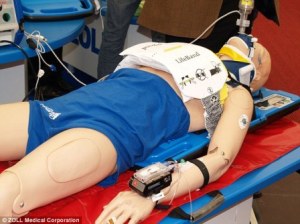Save Shows Value of AutoPulse
May 12, 2013 - Clinically dead for 40 minutes, 39-year-old Colin Fiedler regained a pulse following what would normally have been a fatal cardiac arrest. The difference: he was taken by ambulance to The Alfred Hospital, where he was treated with the ZOLL AutoPulse® Non-invasive Cardiac Support Pump, which provided high-quality mechanical chest compressions until he could be revived.
Resuscitation efforts would typically have ceased before 40 minutes elapsed. But recent data has shown that as long as high-quality compressions are consistently delivered so that circulation to the brain and other organs is maintained, many patients can be revived after an extended period of time.
Ambulance Victoria and The Alfred Hospital are participating in a clinical trial known as CHEER, which involves the AutoPulse and is evaluating a new protocol for treating patients when standard pre-hospital resuscitation has proved futile. Fiedler is one of the patients who have been successfully revived using this protocol after being clinically dead for 40 to 60 minutes. After a complete recovery, he has made lifestyle changes that include quitting smoking.
Currently, only three ambulances in Melbourne are equipped with the AutoPulse, but there is potential for deploying the device on additional vehicles. Former junior world champion triathlete Clare Carney was successfully revived thanks to manual CPR and an AutoPulse onboard one of these ambulances.
Related Stories
AutoPulse Used to Help Save British Footballer from Sudden Cardiac Arrest

